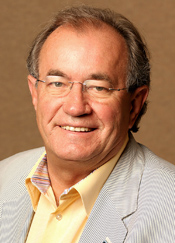
The Canadian Auto Workers union plans to meet next week with General Motors Canada Ltd. and Chrysler Canada Inc. after presenting the auto makers with an historic pattern agreement established with Ford of Canada Ltd.
The 3-year deal, approved at noon today by senior CAW leaders but still contingent on rank-and-file ratification set for Thursday, comes more than five months before the expiry of the current agreement.
“Everybody in shock? I know I am,” CAW President Buzz Hargrove tells stunned journalists who expected true-to-form, down-to-the-wire negotiations because of the industry’s sagging economic fortunes.
The tentative deal maintains a $7-per-hour all-in labor-cost gap that favors American operations whose blue-collar employees are represented by the United Auto Workers union. But Hargrove expects the CAW’s $67-per-hour wage-and-benefit rate will remain constant, while predicting the UAW’s $60-per-hour package will escalate despite the establishment last fall of an independent health-care fund that relieves GM, Ford and Chrysler of crushing financial obligations.
Claiming there exists an additional 25% productivity gap that favors Canadian operations, Hargrove defends the costlier Canadian deal and expects GM and Chrysler to follow suit.
“We’ve now established the pattern,” he says in a news conference. “We do not anticipate getting in any kind of a fight with General Motors or Chrysler.”
In the wake of last summer’s dissolution of DaimlerChrysler AG and the establishment of an independent Chrysler LLC, this year marks the first time the CAW will go to the bargaining table with a privately owned Chrysler. Again, Hargrove is confident because Chrysler chided the UAW for rejecting cost-saving concessions negotiated in 2006 with Ford Motor Co. and General Motors Corp.

“We always bargain pattern,” Hargrove says. “It saves all of (the auto makers) from fighting with the union.”
In lieu of a 2-tier wage structure like the one approved by the UAW, the CAW agrees to a “grow-in system” that pays new hires 30% less than current employees. But that scale jumps to 100% after three years.
In addition, cost-of-living (COLA) adjustments are frozen for five quarters, there are no base-rate increases, vacation pay is reduced by 40 hours and workers will take on a 10% co-pay for prescription drugs.
But workers receive a $2,200 “productivity and quality” bonus, co-pays are capped at $250 annually per family and a $3,500 lump-sum payment will be due in January to compensate for lost vacation pay.
Significantly, Ford has agreed to extend by one year the life of its assembly plant in St. Thomas, ON. The auto maker’s commitment now goes through 2011.
Ford builds the Ford Crown Victoria and Mercury Grand Marquis fullsize sedans in St. Thomas. The Crown Victoria is dedicated to fleet applications, such as police vehicles.
The CAW will use the extra year to push for new investment at St. Thomas, but Hargrove says such a commitment could not be had in this round of talks.
The auto maker brought in Joe Hinrichs, group vice president-manufacturing, to address the issue.
“He made it clear to us that we might as well set aside the bargaining” if the union continued to push for an investment.
Says Ford Canada spokeswoman Lauren More: “We have a framework for an agreement on major financial items – wages, benefits and pensions. We continue to discuss items specific to local operations. Since our discussions are continuing, it’s premature to discuss any of the details. We’re holding local discussions this week, and haven’t set a deadline (to wrap up talks).”
The union began to push for an early resolution to quash speculation the CAW “had a gun at its head” because of the UAW’s agreement.
“We had to start making the case for our operations in Canada,” Hargrove says. “We had meetings on Wall Street. We had meetings on Bay Street (Canada’s financial district in Toronto). We had meetings in Montreal, Detroit. We met with anyone who would listen to us in the investment community and analyst community.
“We didn’t want the companies getting a head of steam and thinking somehow they’re going to roll over us,” he adds.
The most productive bargaining occurred Sunday. Now, the way is clear, Hargrove says.
“We have a simple process in front of us,” he says. “The cloth is cut. It’s a matter of putting the pieces together.”
Workers seemed either indignant or resigned to the tradeoffs.
“This is not bringing anyone back to work,” says a post on an auto workers’ website. “This will save the people that are working right now.”
Says another: “No raises for three years? No COLA for almost two years? Loss of 40 hours’ vacation? With the price of food, gas and everything else autoworkers are definitely going to feel it. This is a terrible agreement.”
The CAW represents about 9,000 hourly Ford workers. The last contract, negotiated in 2005, covered nearly 12,000 workers.



